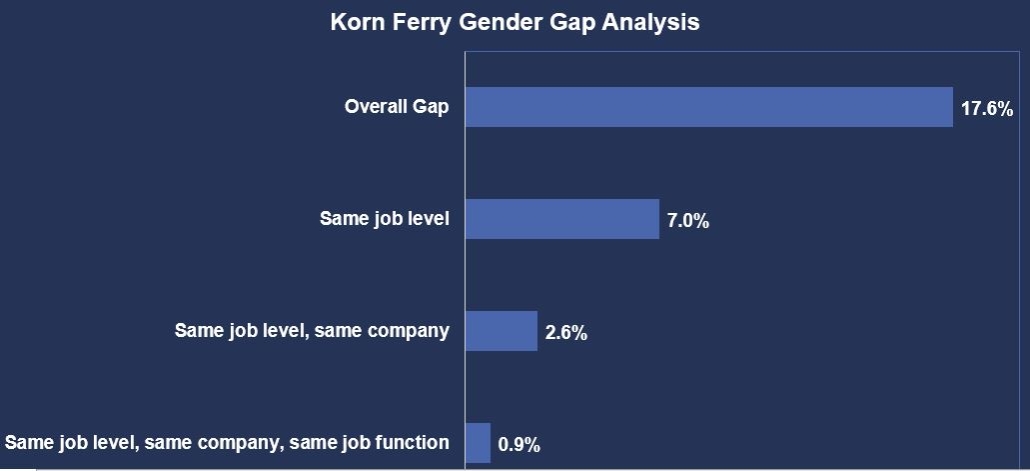Pay equity is a topic that isn’t going away. Rather, the spotlight is only getting brighter.
This makes understanding possible pay gaps between the men and women in your workplace and adopting proactive approaches to remedy pay inequities more important than ever. For instance, according to the American Association of University Women, 42 states as well as Puerto Rico and Washington D.C. proposed new pay equity legislation last year. Not all the measures passed, but enough did making it challenging for organizations operating in multiple markets to address the issue of pay equity in a comprehensive way.
A growing number of states and local governments have made it illegal for employers to ask candidates for their salary history. The rationale for the law is this: since females have historically been paid less than males, platforming a new salary over a low salary only perpetuates the difference. In response to this trend, a recent WorldatWork survey finds that 37% of companies have a nationwide ban on asking potential candidates about their past pay.
Additional legislative approaches to tackling pay equity include new laws promoting more pay transparency; others give employers protections for making “reasonable progress” toward pay equity. Clearly, the shifting landscape and impact of gender wage gap laws raise compliance and performance concerns for companies and their compensation policies.
What is Gender Pay Equity?
When we talk about gender pay equity, this often is confused with equal pay or these terms are treated interchangeably. However, there is a difference.
The gender pay gap is a broad measure between the aggregate pay for women and men across the organization. It is expressed as a percentage of men’s earnings.
Equal pay requires women and men doing the same or a substantially similar job to receive the same compensation and benefits. In other words, equal pay for equal work.

It is important for businesses to understand the distinction. Why? Both areas should be examined to better understand pay differentials within your organization and the factors at play impacting your talent management programs.
Understanding Gender Pay Equity
Several studies in recent years have looked at pay gaps to better understand the causes and impacts.
In a new article, “More Than a Pay Gap,” management consulting firm Korn Ferry examined its compensation data base for organization-wide pay differences within 110 countries. What they found is that the gap in the United States narrows considerably the more specific the comparison becomes. While women on average earn almost 18% less than men, the gap between a man and woman working in the same job level for the same organization in the same function is typically only .9%.

Korn Ferry researchers have concluded the reason women are paid less than men is not necessarily the result of unfair pay practices. Indeed, this may be the case in some organizations (after all, averages mask actual comparisons). Rather, the gap in pay is deduced to be the result of fewer women working in higher paying industries or leadership functions.
As the Korn Ferry study reveals, the solution to the organization-wide gender pay gap represents a complex and systematic challenge. We will focus on how to meet the challenge in a future issue of Compensation Alert. Meanwhile, companies have immediate opportunities to evaluate whether your organization is complying with equal pay statutes.
Conducting a Pay Equity Analysis
Inequitable pay practices can pose immediate risks to your business – including reputational risk. To help uncover possible issues driving any pay differentials within your organization, conducting a pay equity analysis is recommended. Following is a step-by-step process overview:
It may be prudent to consult with a lawyer, as audits of this type are often protected by lawyer-client privilege.
- Identify the equal pay practices you want to investigate.
- Gather data on employees grouped by comparable worth. Jobs should be examined regardless of job title, with the focus on work performed, the manner in which the work is performed, and the skills required for the job.
- Determine what drives pay most, whether desirable factors such as performance and/or level or undesirable factors such as race, gender or age are involved.
- Beyond the job-based analysis, the study should look function-by-function, manager-by-manager, and location-by-location to see if any equity trends emerge. Any pay gaps can then be closed.
- Following the job-based analysis, it is important to dig into the causes of those gaps. For instance, salary structure and other compensation tools need examining.
- Finally, leaders must be committed to change if undesirable factors influencing pay have been discovered. Change can only happen if commitment exists at all levels to ensure fairness, consistent communications, and organization-wide management practices.
Conclusion
The type of pay analysis described above will need to use comprehensive compensation market data, review and likely overhaul compensation administration guidelines, and update job grading systems. But smart organizations can turn it into an advantage. How? By looking beyond current law to build proactive policies and practices promoting gender equality (and diversity of employees) and embedding these values into the company culture.
Further, experts say that organizations that manage pay equity well and have diverse, inclusive cultures post higher returns and have more trust in leadership, greater employee engagement, and less turnover. Organizations that fail to manage pay equity well are subject to the inverse consequences, plus increased risk of litigation.
Let’s Connect
If you enjoyed this or other articles I have written, please share it with anyone you think may also find it of interest. For help or information on this topic, you can email me or call.
Contact me at (847) 921-2812 or nlappley@lappley.com.

